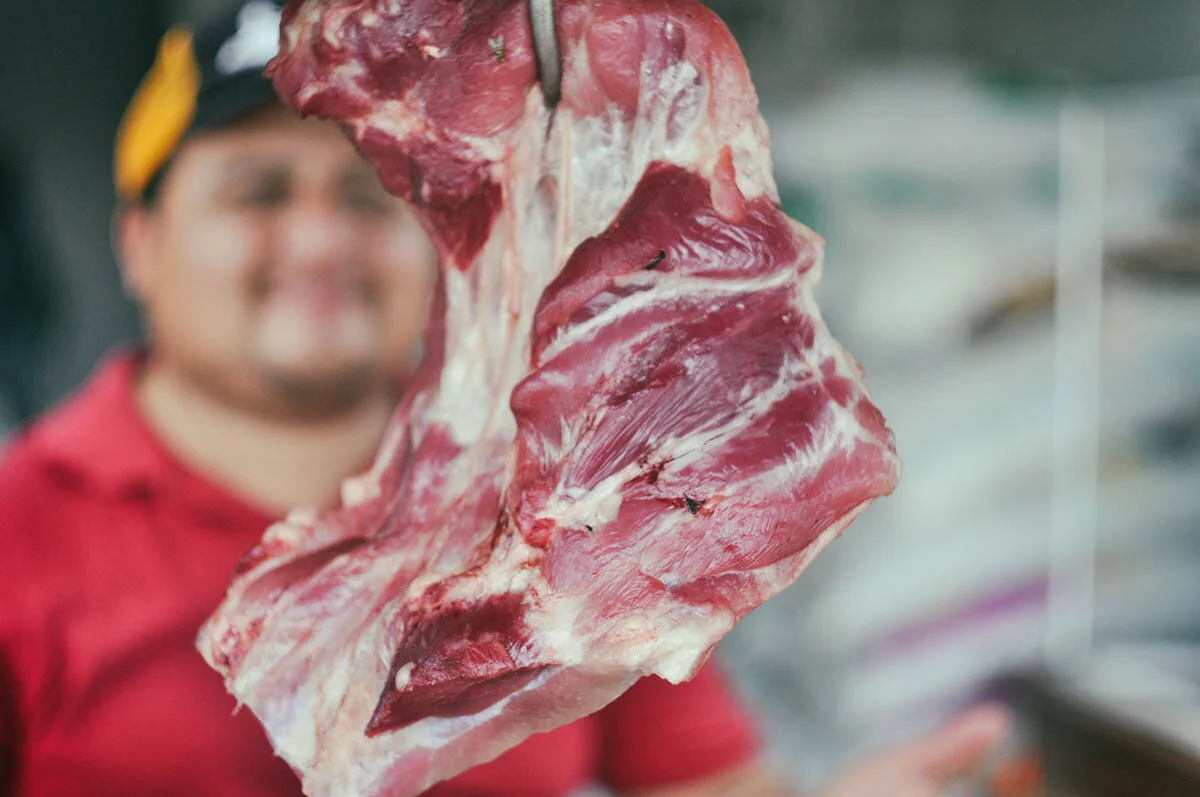Meat Processing Is A Dangerous Job. It’s About to Get A Lot Worse.
About three and a half seconds. That’s how long inspectors currently have to check a pig carcass for lesions, hair, infected organs, or fecal matter before it’s sent whirring to workers, who slice up the roughly 250-pound animals in a freezing room, side by side, for eight to 10 hours a day, churning out more than 1,000 pigs an hour.
If a new pork inspection rule recently highlighted by the Washington Post passes next month, the lines will run even faster and plant employees will have to take responsibility for this visual inspection, putting workers and eaters at risk.
Though this might sound like another Trump-era regulatory rollback, it’s actually the final step in a drawn-out food safety debate that’s spanned four administrations.
The changes are part of a double-acronym mouthful, the Hazard Analysis and Critical Control Point (HACCP)-Based Inspection Model Project (HIMP). These new inspection methods have been quietly piloted at a select number of pork and poultry plants for some 20 years, with the basic goal of reducing USDA inspector spot checks and moving more safety testing offsite. Big meatpackers and the U.S. Department of Agriculture Food Safety Inspection Service claim these “modernizations” will improve safety and address inspector shortages, without harming workers.
But accounts from workers and investigations by government watchdogs and advocacy groups tell the opposite story. By speeding up processing lines and allowing meatpackers to police themselves, HIMP plants pose serious risks for food safety and increase already hazardous working conditions.


